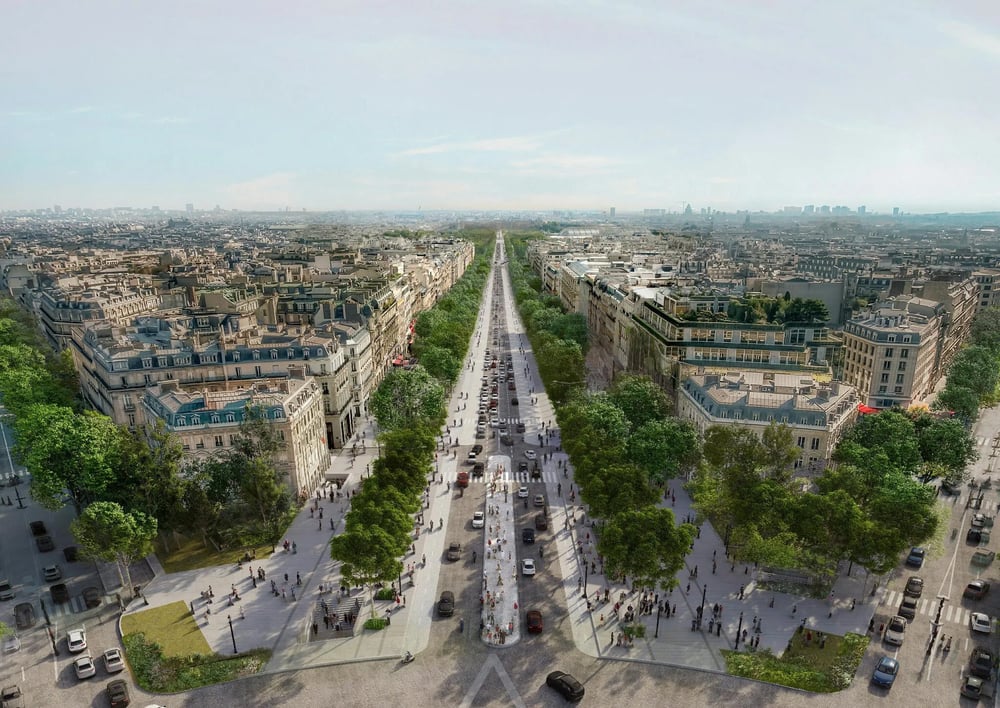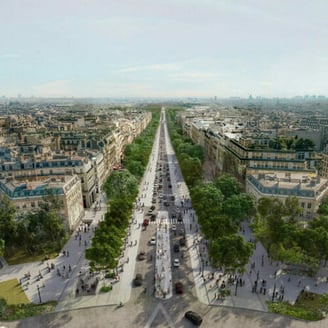AFP
May 28, 2024
Fewer cars and more culture to reinvent the Champs-Elysées
AFP
May 28, 2024
Unloved by Parisians, the Champs-Elysées avenue needs to be reinvented if it is to remain the ‘most beautiful avenue in the world’ praised by tourist guides, and this will require a strong comeback for walkers, green spaces and culture, according to a study.

After five years' work and a budget of €5 million, the Comité des Champs-Elysées, which has brought together the economic and cultural players on the world-famous avenue since 1916, presented its 150 proposals on Monday to reinvent the area.
Too expensive, taken over by luxury brands, too noisy, too polluted or impossible to cross... According to its chairman Marc-Antoine Jamet, the Committee's starting point was the "alarming" observation that the avenue "was no longer loved, no longer likeable, deserted by Parisians, feared by foreigners," in short that "everyone was fleeing it."
The latest consequence is the closure of the UGC Normandie cinema in June as a result of "falling attendance" at cinemas along the two-kilometre-long avenue.
By the end of 2023, another historic cinema, the Gaumont-Marignan, had also closed its doors, while Fnac, weighed down by rising rents and falling customer numbers, will close its doors at the end of 2024.
To attract Parisians back, the 1,800-page, 400-map study, which involved 183 experts, proposes turning the Champs-Elysées back into the strolling spot sung about in the 1970s by Joe Dassin.
The authors recommend increasing the space reserved for pedestrians by 13% by widening the pavements on the upper part of the avenue, reducing the number of lanes reserved for traffic from six to four and doubling the width of the cycle lanes.
Break-out areas are also to be installed, including eight 150 m2 "plant lounges" with "seating, shade in summer and a fountain", as well as a network of free sanitary facilities with nurseries.
Climate refuge
"We need to maintain a balance between foreign tourists and Parisians, (...) between public and private activities, (...) between an activity that would be museum-like but would put the avenue back in the spotlight and the absolute need for innovation," Marc-Antoine Jamet told the press.
Currently neglected, the 20 hectares of gardens near Concorde would become "a true Parisian park, on a par with Luxembourg and Buttes-Chaumont," with children's play areas, water features and fountains.
The aim is also to adapt the avenue to global warming by increasing the amount of permeable soil by 120%, planting 160 trees and creating 1 hectare of meadows and flowerbeds.
The authors aim to reduce the avenue's carbon footprint by 33% over 50 years, and to lower the average temperature by 1 to 7 degrees so as to transform the avenue into a "climate refuge" in the event of a heatwave.
Pointing to the "visual and formal disorder" from which the avenue also suffers, they call for the preservation of Belle Epoque street elements (Morris columns, Wallace fountains) and the creation of a harmonised design for the entire Champs-Elysées.
Finally, the study aims to "remake the district" by programming a cultural offer "throughout the year" coordinated by a "cultural and artistic manager."
Following the example of the giant picnics and events organised from time to time in front of the Arc de Triomphe, it suggests organising large scale, free events, that aim to bring people together on Place de la Concorde: "magical nights" in the gardens, symphony concerts, flower markets, and anticipates the return of a decent Christmas market.
Not forgetting the proximity of the Elysée Palace and the National Assembly, the authors propose installing a "health and safety point" equipped with first-aid equipment, which would be open 24 hours a day, and increasing the number of pedestrian and equestrian patrols.
"We will be holding discussions with all the partners, first and foremost with the police prefecture (...) the idea being that the mayor of Paris will be able to present the major decisions in the second half of 2024," explained the first deputy mayor, Emmanuel Grégoire.
The Comité des Champs-Elysées estimates the cost of its proposals at €250 million. "To us these are not costs but investments," said Marc-Antoine Jamet, for whom the project will generate additional tax revenue that "is intended to finance all or part of the investment."
Copyright © 2024 AFP. All rights reserved. All information displayed in this section (dispatches, photographs, logos) are protected by intellectual property rights owned by Agence France-Presse. As a consequence you may not copy, reproduce, modify, transmit, publish, display or in any way commercially exploit any of the contents of this section without the prior written consent of Agence France-Presses.










